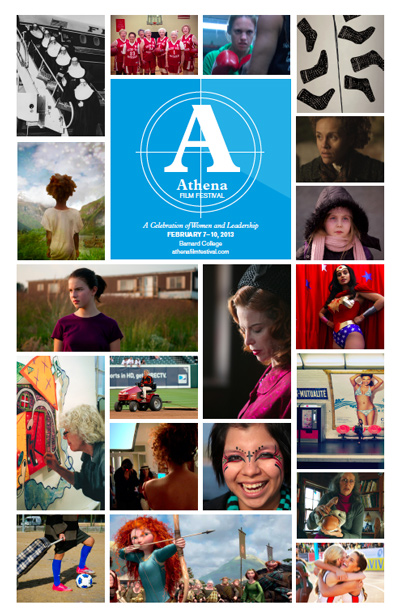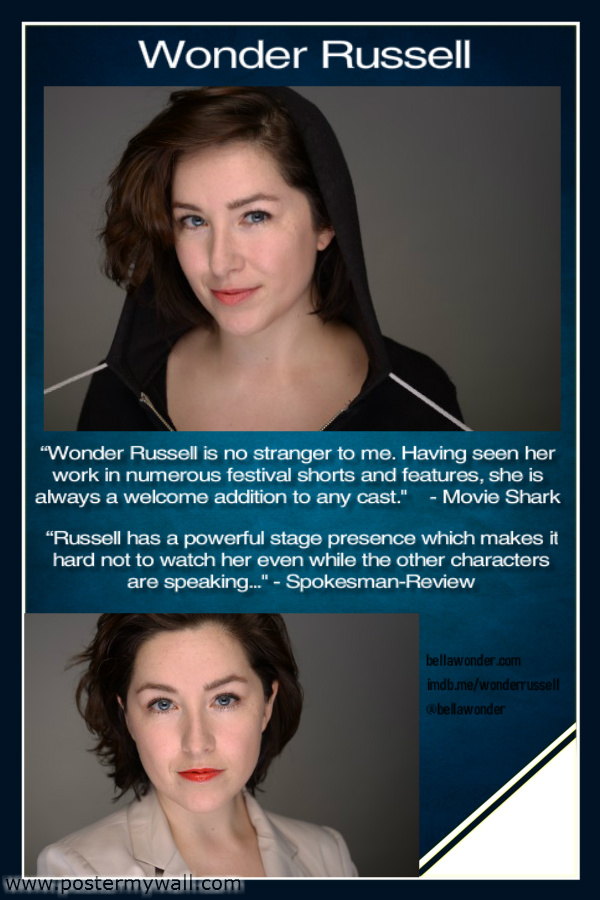This guest post written by Jillian Corsie is an edited version that originally appeared at Trichster.com. It is cross-posted with permission.
Making a DVD is fairly easy! I’ve done this loads of times before! All you need is a menu, a ProRes file, and DVD Studio Pro. Then you burn to your heart’s desire. Shouldn’t take me more than a few weeks to get these all finished, right? Wrong. I was so wrong! But now I’m a pro, and I’m going to tell you how to be one too.
When my production team and I first started crowdfunding our feature documentary, Trichster, in the summer of 2012, we offered DVDs as one of our incentives. We figured that since our film was going to be small, it would be no big deal to burn a handful and send them to our supporters. Little did we know that first campaign would gain international attention, that our film would end up on ABC’s 20/20, or that we’d soon be winning awards for a documentary we were all making in our spare time.
Once we finished the film (two years later than we thought), it was time to fulfill our crowdfunding rewards. At this point, my producers and I started questioning whether or not people would even want a DVD. Who watches DVDs anymore? Now it’s all about streaming sites like Amazon and Netflix. We had already released the film on iTunes and VHX and sent our supporters their digital downloads. Maybe we didn’t need to make DVDs after all! Once we released Trichster, the emails from fans started pouring in. People wanted to know when and how they could buy their DVDs. As it turns out, Trichster has a wide range of audiences. A lot of people don’t have iTunes accounts or find VOD platforms like VHX confusing and difficult to navigate. We knew that we needed to make DVDs. I figured the process wouldn’t be all that difficult. But what I thought was going to take me 3 weeks ended up taking 4 months.
SUBTITLES: They’re not what they seem
First I needed to gather my assets. I have one 73 minute feature film and 4 bonus feature clips to include. I also needed English and Spanish subtitles for the film, since we have a large Spanish speaking following. I’m about to get really technical here so bear with me!
I had already had an English SRT file made (total cost: $500) for our online closed caption delivery. I needed to find a place that could convert the file into a STL file in order to make the DVDs. I’m no genius when it comes to subtitle file types, so this was an incredible learning experience. I tried downloading some software which would allow me to edit my SRT file and do the conversion myself. After 4 days of frustration and wasted time, I gave up and decided it’s best left to the professionals. I got quotes from a few different caption houses and settled on one that was reasonably priced and in my area. They wanted $657 for the Spanish subtitles and $25 for the SRT to STL conversion.
Here’s where frame rates come into play. My film was shot and finished at 23.98fps. Our NTSC DVD needed to be 29.97fps, and we needed to make a PAL DVD for our international community at 25fps. 3 different frame rates equals 6 different subtitle files. I asked my subtitle house to do a blind conversion, meaning they don’t manually sync up the text to the picture. Seems like it would work anyway right? Wrong. So I spent $175 for a conversion that didn’t work before having to have them manually sync the English and Spanish titles for a cool $643.86. Finally, I had my titles ready to send to my DVD author. Total cost of digital closed captioning and DVD subtitles: $1,975.86.
MENU DESIGN: It pays to have talented friends
It dawned on me that I had better have my DVD menu artwork all figured out before I sent my assets over to my DVD author. Luckily, I have an extremely talented friend who is a whiz at Photoshop who volunteered to design all of my assets for me. She designed the disk artwork, DVD case artwork, and all 4 pages of the DVD menu. After a week of printing out tests and trying different things, we finalized the artwork. Now, let’s get those DVD’s made!
DVD AUTHORING: NTSC and PAL and what region now?
After putting my feelers out to my network of independent filmmaker friends, I picked a guy who cut me a break because I was an independent documentarian trying to do work that helped people. He explained to me the different file types that he’d need from me and talked to me about converting all 5 of my video files from 23.98fps to NTSC 29.97fps and PAL 25fps (10 files total!). PAL is optimized for TVs in Europe, Thailand, Russia, Australia, Singapore, China, and the Middle East while NTSC is optimized for TVs in the USA, Canada, and Japan. He said he’d also make all DVDs region 0 so that they would play in DVD players in all countries. He did the conversions and worked with me to send my subtitle house the correct transcodes so that my titles lined up. I send him a timecode list of where our chapter makers should be. After some back and forth, he sent me my preview disks for me to approve before making the final masters.
PANIC ENSUES: Is this DVD in sync?
I held onto my test DVDs for about a month. I watched them at home on my DVD player. I watched them at work. I had my friends who work in post-production watch them. I was convinced something was wrong with them. I couldn’t tell if the film was in sync, if it was drifting out of sync, or if I had just seen the film so many times that I couldn’t think clearly. Most of my friends said it was fine and that I was being ridiculous. Finally, after sleepless nights and panicked phone calls to my producer, a friend in IT told me something that calmed my nerves right away: all DVDs are highly compressed and all DVD players are doing their own frame rate conversion in order to play on whatever monitor it’s being played on. Some monitors playback at 59.97fps, some are 23.98fps, etc. These things are not, and will never be, in my control. I was released of my worry! Onto the mass printing of the DVDs.
DUPLICATION v. REPLICATION: Isn’t that the same thing?
As it turns out, a DVD author is not the same thing as a DVD printer. Once I had my final DVDs ready to go, I needed to get them printed. We wanted 500 NTSC DVDs and 100 PAL DVDs. Our choice was to either duplicate or replicate them. Which to me sounded like the exact same thing. Except it’s not, and one is more expensive. A DVD duplicator extracts data from the master disc and writes it to a blank disc, like making a copy, whereas the replication process is essentially cloning a master disk. Duplication can be done much faster, and at a higher price, while replication is more time consuming but less costly. We chose to replicate our DVD since it would save us about $500. After 2 weeks, I got the call that my DVDs were ready! I went and picked up 6 boxes of shiny, plastic-wrapped, DVDs. I’ll admit, seeing it for the first time was pretty cool. Total cost of DVD printing: $1591.42
SHIPPING 200 DVDs: Or, how to be the most annoying person at the post office
So I had 6 boxes of DVDs sitting in my living room. Time to email our supporters and get their addresses so I can ship. I know there are easy ways to ship mass quantities of DVDs, but when you are without a printer it makes it difficult. So, one Saturday, I put on Friends re-runs and I started hand writing the 200 envelopes and stuffing the DVDs into the packages. I then made 4 separate trips to the post office to use the self-serve machine. I had to go to the counter to mail the international envelopes which created a big line and made people behind me a tad irritated! As it turns out, it costs $13.25 to ship each international envelope! Note to self: consider this when choosing crowdfunding incentives.
WHAT I LEARNED: DVDs are cool, but do we need them today?
I have to say, it was an amazing feeling to send out our DVDs. It was really the last hurdle I had to jump for Trichster, and it felt like closing a chapter on a wild 4 ½ year period of my young life. I’m really proud that we even made it this far and that we were able to send our supporters what they were promised. I feel like we’ve made a difference and I’ve learned so much about the entire filmmaking process. It’s so fun to see fans excited about receiving their DVDs on social media. That being said, next time around I would not make DVDs. The world is changing and people don’t consume media the same way they used to. Most of us plop down on the couch and head to Netflix or iTunes to watch our favorite content. At a whopping total of $3,567.28 to make our DVDs, I think it’s better to put funding into marketing than to put so much time and effort into such an expensive process! That being said, it’s an incredible feeling to hold your professionally printed DVD in your hands. Best of luck indie filmmakers!
Jillian Corsie is a freelance editor and award-winning filmmaker based in the Los Angeles area who specializes in post-production. She has worked on a wide range of projects varying from commercial work to film trailers to feature documentary. She recently finished touring the film festival circuit with her debut feature documentary, Trichster, which launched on the iTunes “New and Noteworthy” best-seller list just days after it’s release in the Spring of 2016. Jillian was awarded “Best Young Filmmaker 2015” from Los Angeles Center Studios. She looks forward to making more films!











